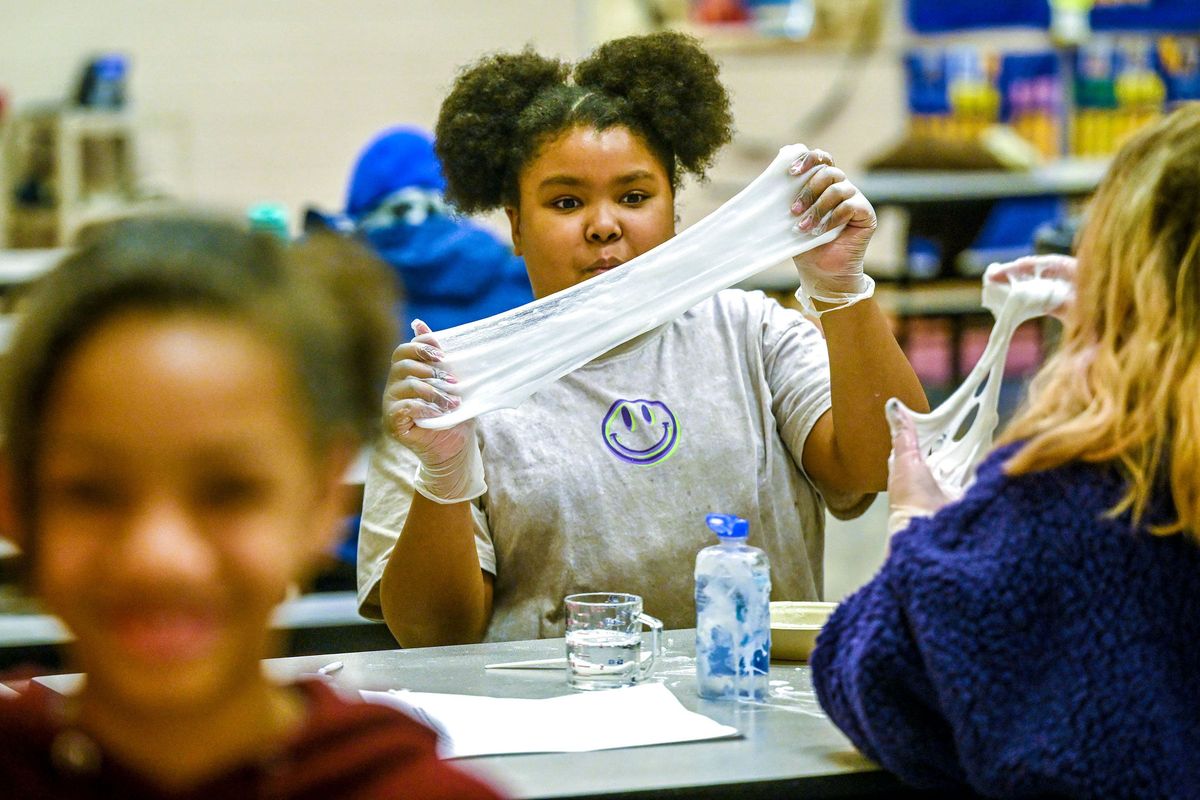Spokane Public Schools receives $2.5 million grant for supplemental student programs

Spokane Public Schools received a $2.5 million grant to expand nonschool hour programming seeking to improve academics, school engagement and students’ sense of belonging at four elementary schools.
The federal grant pays for supplies, staffing and resources for before- and after-school and summer programs at Bemiss, Cooper, Regal, and Stevens Elementary Schools for five years.
Each school offers a different breadth of programming and a range of activities, including robotics, Dungeons and Dragons, typing and slime creation. Site coordinators plan programming designed to help students with academics, behavioral issues, social emotional development or school attendance, based on their needs.
“Our thought is when students are engaged, they feel a sense of belonging in their school and they’re seeing themselves be successful,” said Le’Andra Myers, after-school programs director at the district. “That translates to fewer behavioral issues as well.”
A favorite among Bemiss elementary schoolers is the gardening club, which served 60 kids last spring. Students choose the crops they grow – using hydroponic towers and raised beds.
“Everything they grow, they get to keep,” said Takwona Davis, a former site coordinator at Bemiss and now program manager with Communities in Schools Spokane, a partner in overseeing grant-funded programing. “We made a really cool salad; the kids thought it was awesome, and also down to them making their own dressing using the herbs from our garden.”
At each school, the district hopes 40 pupils will attend at least one before- or after-school program funded by the grant.
During the school year, the grant will allow the four schools to offer 12 hours per week of activities before and after school and 20 hours weekly during summer break. Supervisors are often teachers, paraeducators and other staff at the school.
Offered free of charge, the activities constitute supervised child care in a safe and educational setting. Myers said the centers are particularly popular during late-start school days that overlap with parents’ work schedules.
“We’re hoping that it at least lessens the burden on families trying to figure that part out,” Myers said.
Per the grant, directors are required to collect metrics like attendance, state testing scores, student survey responses and behavioral indicators to measure the success of programs.
It’s the second such grant the district has received. The first was a five-year grant awarded in 2020 to set up programming at Shaw and Garry middle schools and Lidgerwood and Logan elementary schools.
At Lidgerwood, fifth-graders Remi Olajoyegbe and Rylin Post are masters in the art of slime-making in their after-school program. They started with a questionable bowl of sludge, but with a splash of glue here and a sprinkle of baking soda there, the two have a mass of satisfying squishy slime.
The process teaches them to follow a recipe and different units of measurements they’ll confidently encounter in the classroom setting. Slime requires an optimal balance of ingredients, imparting the lessons of trial-and-error on kids.
“So when they go back into their math, they’re like, ‘I know how to do this now, because I did it with my hands and then I also did it with a teacher’s help,’ ” Davis said. “To make sure they really understand and get that element.”
Considering the behavioral and emotional elements at play, supervisors walk their kids through emotions they may feel and how slime can help them calm down. Remi squelches her slime to help her focus and feel less fidgety.
“Especially if you’re doing schoolwork,” she said.
She regularly attends her after-school club, which offers different science-focused activities every day and a designated period for getting help on homework.
“I like doing basketball and stuff,” Remi said. “Also seeing friends that you don’t really get to see all day if they’re not in your class.”
While a slime afficionado, Rylin also fancies herself a photographer. She’s looking forward to participating in an after-school photography activity.
Last school year at these four schools, nearly 900 students attended at least one day of programming; around half regularly attended.
Site coordinators also offer services for participants and their families, including food pantries and programs that offer warm clothes and boots for the impending winter and financial resources.
“As we’re trying to find additional opportunities and access points for students, this really fits that,” Myers said. “We also saw a need with the academic piece. This is different than all my other extracurriculars because it has this academic piece every day.”